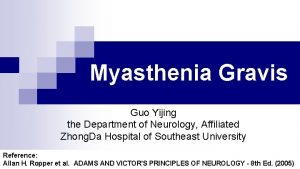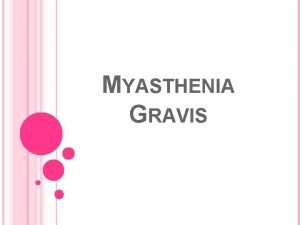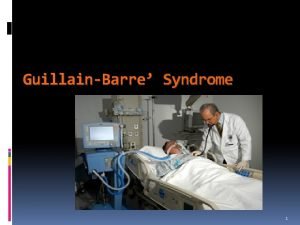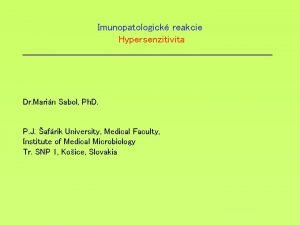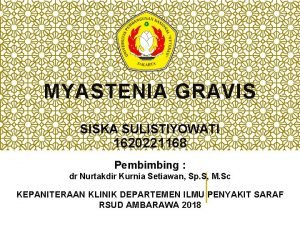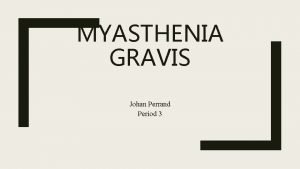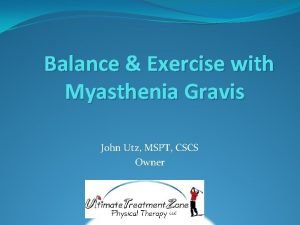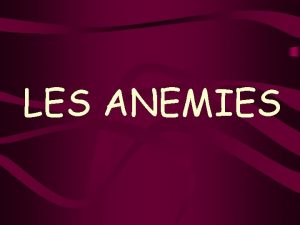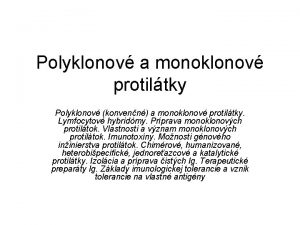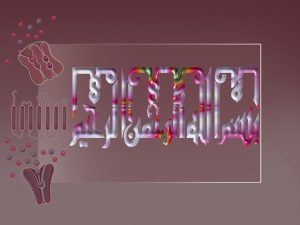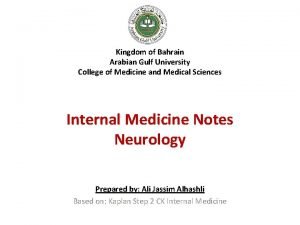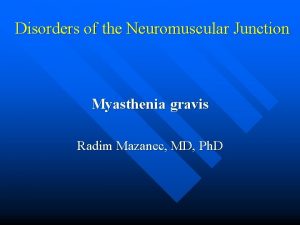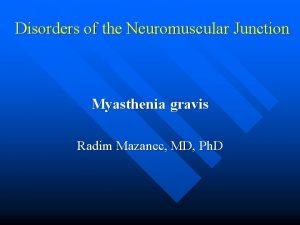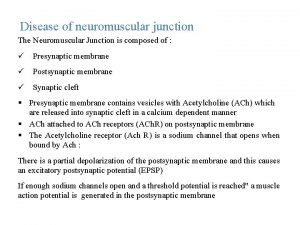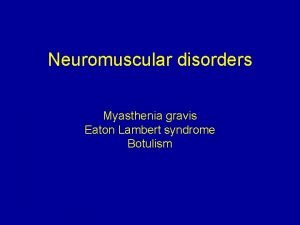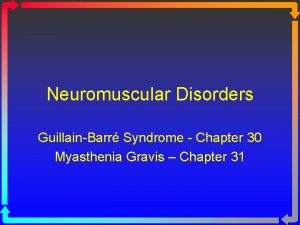Myasthenia Gravis Disease of the neuromuscular junction characterized










- Slides: 10

Myasthenia Gravis • Disease of the neuromuscular junction characterized by fluctuating weakness of certain skeletal muscle groups. Neurology Chapter of IAP

Myasthenia Gravis(MG) • Acetycholine (ACh) is an important neurotransmitter that stimulates muscle tissue to contract. • MG is an autoimmune disease in which antibodies are formed against ACh and a reduction in ACh receptor sites at the neuromuscular junction. Neurology Chapter of IAP

• Neurology Chapter of IAP

Pathophysiology • Loss of muscle strength. • There is no single cause identified, however, thymic tumors and viral infections have been found in a certain number of patients. Neurology Chapter of IAP

Clinical manifestations • Primary s/s= easy fatigability of skeletal muscle during activity. • Muscles involved: eyes and eyelids, chewing, swallowing, speaking, and breathing. • Fluctuating weakness: usually strong in the a. m. , progressively weaker with activity. Neurology Chapter of IAP

Clinical Manifestations • 90% of patients have eye involvement • Facial mobility may be impaired • Muscles of limb and trunk less often affected. • No sensory or reflex loss; muscle atrophy is rare. Neurology Chapter of IAP

Clinical manifestations • Variable course • May be precipitated by emotional stress, pregnancy, menses, secondary illness, trauma, temperature extremes, hypokalemia, ingestion of drugs with neuromuscular blocking agents, surgery. Neurology Chapter of IAP

Complications • Aspiration, respiratory insufficiency, and respiratory infection • Acute exacerbation called myasthenic crisis. • The opposite of this is a cholinergic crisis and results from overdose of cholinergic drugs. Neurology Chapter of IAP

Diagnostic studies • Assessment: – Have pt look up for 2 -3 minutes; if MG, patient will have increased droop of eyelids. – EMG may show muscle fatigue – Tensilon test- in MG reveal improved muscle contractility after IV anticholinesterase agent edrophonium chloride (tensilon) – Also diagnosis cholinergic crisis- muscle weakness gets worse – Keep atropine on hand to counteract effects of tensilon Neurology Chapter of IAP

Therapeutic management • Anticholinesterase inhibitors- prevents anticholinestersase from breaking down ACh; helps neurotransmission. Monitor dose! – Mestinon, Prostigmine Corticosteroids- decrease immune response Prednisone Plasmapheresis- removes ACh antibodies and short-term improvement. Neurology Chapter of IAP
